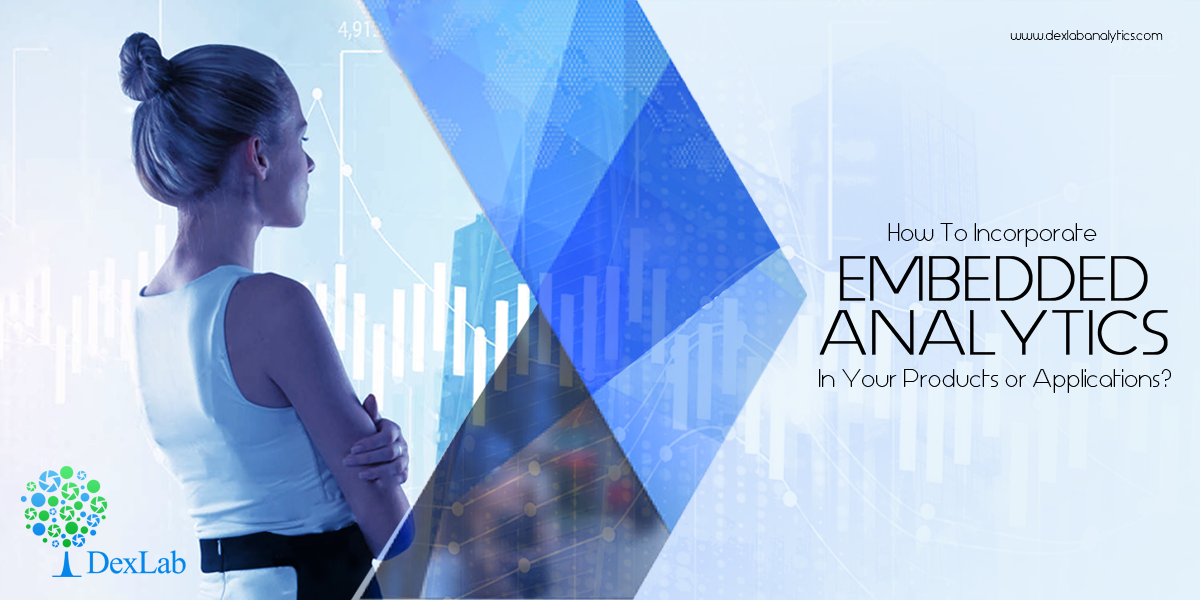
The adept R&D team shares a common responsibility – devising incredible products and solutions. Right from VPs and directors of development to DevOps and system engineers – every professional is well aware about their customer expectations.
In today’s data-driven industry, customers desire to collect information regarding product use, numerous status updates, number of times they engaged with the product and so on. In short, they need access to data that not only help unravel crucial insights but also makes the product fetching.
Definitely, you can create your very own analytics solution, but what if it takes so much time that your competitors outgo you? So, what next?
Embedding analytics into your product or application can be your thing for the day, but how to do it effortlessly?
Collect Data from Various Sources
We are surrounded by IoT (Internet of Things) and IIoT (Industrial Internet of Things) revolution, where each connected device and sensor accumulates data and this collection and analysis of data is significant to customers. Teams need to sit together and discuss out options for creating an analytics overlay for the product, which will trigger a million questions – how can we get through it? Will our solution scale the growth of number of users? How can we go on improving our products? How do we keep up with all the developments happening in analytics?
Things to Consider While Embedding Analytics
“Start by looking for specific analytic applications that complement your ERP and BI platform investments. In the long term, review vendor capability to support reusable analytics artifacts (i.e., services) in a service-oriented architecture environment,” – says Gartner.
To this, we’ve listed a few functionalities waiting for your attention:
Data Access – How simple do you want your platform to be so as to integrate your data well across all sources and types?
Visualization – Does the platform you chose comprise widgets you need? If not, can you develop them using customization options?
Modeling – How much easier will it be to code for data preparation for user consumption?
Embeddability (iFrame, JS libraries, JavaScript) – Dashboards should be built in a way to suit your customer’s requirements either in mobiles or in web-based applications.
Extensibility (APIs, SDK, JavaScirpt) – No hard fact, for incorporating analytics workflow, solutions supporting API is the key. Otherwise, not getting extensibility will leave you tied to the same analytics platform and can cost you consulting fees and vendor-developed modifications.
Process integration – Generally, integration takes months – so find a vendor who is capable enough to integrate with your products in a week or two so that you remain focused on the benefits alone.
Security – Judge a vendor based on his security credentials – it’s one of the most crucial considerations to tick off your checklist.
As last thoughts, the consideration of these 7 functionalities is just the beginning of embedding analytics into your products or applications. To sail through, the most important thing to do is to choose a suitable vendor who will grow and start thinking of you as a partner and not just any customer. Let him offer you quick, easy and seamless integration, and you solely focus on your customer needs and preferences, and for this, they will LOVE YOU for sure!
If you are still confused about embedded analytics or related concept, let career-building business analyst training courses in Noida help you! For more information on business analyst training delhi, drop by DexLab Analytics.
This blog has been sourced from – https://www.sisense.com/blog/going-embedded-pillar-analytics-success
Interested in a career in Data Analyst?
To learn more about Data Analyst with Advanced excel course – Enrol Now.
To learn more about Data Analyst with R Course – Enrol Now.
To learn more about Big Data Course – Enrol Now.To learn more about Machine Learning Using Python and Spark – Enrol Now.
To learn more about Data Analyst with SAS Course – Enrol Now.
To learn more about Data Analyst with Apache Spark Course – Enrol Now.
To learn more about Data Analyst with Market Risk Analytics and Modelling Course – Enrol Now.
